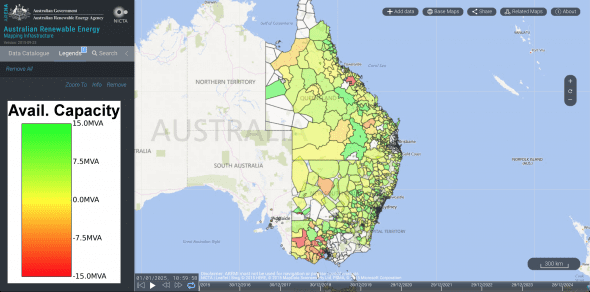A new tool identifying the best places in Australia to install renewable energy and demand management has been released, with the launch of a series of interactive maps by the University of Technology in Sydney.
The online resource, developed by the UTS’s Institute for Sustainable Futures (ISF) with financial support from ARENA, aim to provide clear, consistent and timely information on where renewables alternatives to building new electricity network infrastructure would deliver the greatest economic benefit.

The first series of maps – the culmination of months of work by UTS and its project partners and $453,000 funding from ARENA – uses sample data from network service providers on network constraints, planned investment and the potential value of decentralised energy resources across the National Electricity Market (NEM).
By providing this information, the $1 million project aims to build the market for decentralised energy resources and reduce costs for all electricity consumers.
“Making this information freely and publicly available will help to build the market for decentralised energy resources, optimise grid infrastructure investment and thereby work to lower electricity bills,” ISF Research Director, Chris Dunstan said.
Federal environment minister, Greg Hunt – who today confused the renewable energy industry by announcing the appointment of a National Wind Commissioner – said it was critical Australia made the best, most efficient use of renewable energy.
“Investing in technology to map the most valuable locations to invest in renewables will drive further investment in renewables innovation,” he said.
“This government is delivering more renewable energy and lower electricity bills. This important work by UTS, supported by the Australian government through ARENA, is a step towards reducing peak electricity demand and showing where renewables can add the most value.”
Acting ARENA CEO Ian Kay said the maps could encourage increased renewable energy investment by showing where renewables can add the most value in the NEM.
“The inclusion of the maps on the AREMI platform will complement other energy resource and infrastructure datasets. This is a clear demonstration of how our support facilitates knowledge sharing to eliminate barriers and accelerate the uptake of renewable energy,” Kay said.










